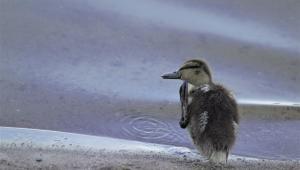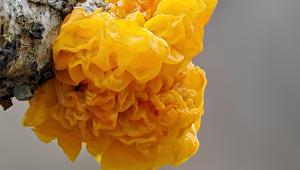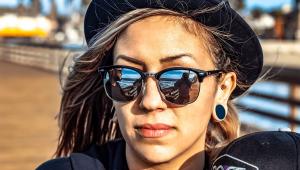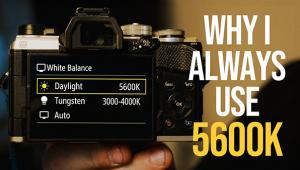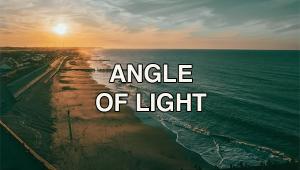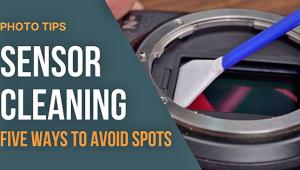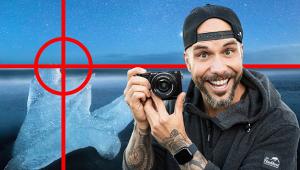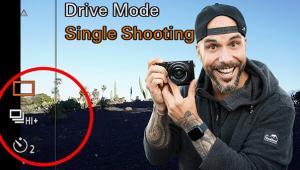Digital Help
Q&A For Digital Photography
Digital Help is designed to aid you in getting the most from your digital photography, printing, scanning, and image creation. Each month, David Brooks provides solutions to problems you might encounter with matters such as color calibration and management, digital printer and scanner settings, and working with digital photographic images with many different kinds of cameras and software. All questions sent to him will be answered with the most appropriate information he can access and provide. However, not all questions and answers will appear in this department. Readers can send questions to David Brooks addressed to Shutterbug magazine, through the Shutterbug website (www.shutterbug.com), directly via e-mail to: editorial@shutterbug.com or goofotografx@gmail.com or by US Mail to: David Brooks, PO Box 2830, Lompoc, CA 93438.
Setting Page Size For Printing Panoramas
Q. I took panoramic pictures with a Kodak EasyShare Z812 IS digital camera. I’m using an Epson Stylus Photo R1900 printer and Photoshop Elements 7. I can’t seem to find the right settings to get full-size borderless panoramic prints. I am using Epson roll paper with a width of 8.3”. The preview shows the picture centered and only about 4” wide. Also on 4x6 paper the picture is too wide and is cropped at the edges and details like the date are partially lost (the 4x6 does print out borderless by using the fit to page or the actual size setting).
Ron Brunelle
via e-mail
A. Open Page Setup, and scroll down in the Paper Size list to the bottom and click on “Manage Custom Sizes” to get the Custom Page Sizes dialog. Then click on the plus symbol (lower left) of this dialog to add an Untitled page size, and then use the dialog spaces on the right to define the size you want for your panoramic print. Sorry I don’t have the R1900 installed but this procedure should be the same.
 |
Prints Too Dark
Q. Every print I have now is dark, particularly the colors orange and yellow. This is bad as I am a photographer of sunsets and night scenes. To help correct this I purchased iProof RIP, and then a whole new set of issues arose. Funny, as for years I had Wow! prints with Tiger and Photoshop CS, now I am so disappointed. Do you have any pointers as I waste so many prints, plus paper and ink, and I have exhausted the Internet for these issues? Adobe, Apple, and Epson seem to have lost the relationship they had, and the users are suffering. Can you help or at least shed some light on this matter?
Christopher Parker
via e-mail
A. Although you did not say, I assume your monitor is an LCD display and that it is typically too bright. Using the Spyder3Pro to profile its software wizard instructions begins the profiling process with the LCD display at default settings, but sadly the calibration process only adjusts for color and does not set or require the user to set the white luminance of the display so it matches the brightness of your printing paper. In other words, color management provides a match of color between monitor and print output, but there is no information in an ICC profile about density. So, if your display is brighter than paper white and you adjust images to look the right brightness on screen, that setting translated to a print will be much too dark.
With LCD displays today the default brightness is usually measured as being over 200.0 CD/m2, but a brightness that matches paper white is between 80.0 and 90.0 CD/m2, and 90.0 CD/m2 was the usual white luminance of those old, bulky CRT monitors set at 100 percent gain (contrast) that are now largely obsolete—but when CRTs were used to color correct, adjust, and edit photo image files no one got dark prints.
In your case, the Spyder is an excellent quality colorimeter, but you need to replace the software that you use to calibrate and profile your monitor. The solution is available in ColorEyes Display Pro (www.integrated-color.com); it works great with your Spyder colorimeter, and the software provides the means to adjust your display and lower the white luminance to 90.0 CD/m2, and from there calibrate and profile your monitor.
The aim is to get prints that not only match your on-screen image in color, but also match a perceptually correct screen image in density. But that means that all your saved photo image files will have to be opened in Photoshop and perceptually readjusted for brightness to appear correct on a now much less bright LCD display, and often readjusted for saturation and maybe contrast as well. The payoff is that they will print the same density as they appear on screen.
Too Few Good And Affordable LCD Computer Displays
Q. Can you recommend a monitor in the (around) $1000 price range? An Internet search wasn’t very helpful.
Jerry Robinson
via e-mail
A. There are not all that many pro graphics displays on the market with a wide color gamut that fully support using Photoshop, and very few indeed under $1000. The all-out best displays for photography are the EIZO ColorEdge displays. The EIZO ColorEdge 22” model that is their least expensive is about $1500. Probably the best buy, especially for a larger 24” display, is the Samsung 245T, currently $654.91 on Amazon.com.
NEC has some very popular high-performance LCD displays, and I am supposed to be receiving one for test and review in their new SpectraView II line (includes a colorimeter and SpectraView II adjustment, calibration, and profiling software, and a 22” wide color gamut P221W LCD display). The entire package lists for under $1000. See NEC’s website (www.necdisplay.com) for details.
Running A Desktop LCD Display From A Laptop
Q. I run the EIZO ColorEdge CG241W on a MacBook Pro. I use Aperture as my editing software. The monitor is profiled using a Spyder 2.0 and EIZO software. My problem is that when I view photos in Aperture they are accurate, except when I go to “Full Screen” where the picture is very warm. The problem I am told by my retailer is that when I go to full screen the computer is using the laptop’s profile, not the monitor’s profile. I originally tried changing the displays so they do not mirror each other and that worked for a few months. I disconnected the laptop for a week and when I reconnected it the profile problem returned and nothing I do seems to fix this problem. Are you aware of the problem and can you suggest a fix?
Louis Kravitz
via e-mail
A. In System Preferences>Displays in the Color pane there should be separated sections for each display and the profile used by each display should be highlighted. It would seem that the likelihood of the EIZO running on the laptop display’s profile would be very unlikely, as I have to assume that you adjust, calibrate, and profile the EIZO with the EIZO ColorNavigator software, and the laptop screen with the Spyder software. If that is the case with your setup, then the profile for the laptop screen should be in your main HD>Library>Colorsync>Profiles, and the EIZO profile would be in your Users>Library>Profiles folder. The EIZO display obtains its boot-up calibration and profile information via a USB interface cable between the computer and the display.
The EIZO depends on that USB connection functioning at all times, including at boot-up and any time the EIZO and laptop are both on and active. So be sure the USB cable interface between the EIZO and your laptop is functioning properly at all times. You can check this by running the EIZO ColorNavigator software and running a profile validation check. And also, use the Systems Preferences>Display to be sure that the displays are not in mirrored mode.
By the way, there is a new upgrade to EIZO’s ColorNavigator, so you may want to visit the EIZO website and download and install the upgrade if you have not done so.
Display Calibration—What’s Important
Q. I have a Samsung SyncMaster 275T LCD monitor and my calibration software is Spyder3Elite. Gamma is set to 2.2, 6500K, black point to 0.50, and white luminance to 120.0. This monitor is very frustrating to calibrate and I am beginning to think I purchased the wrong monitor for digital photographic work. For instance, recently, after 20 or more attempts at attaining the target values, I closed Spyder3 and reopened it to recheck the calibration and much to my dismay the black point had gone from 0.50 to 0.25. Am I missing something with the indigent monitor setup (Samsung does nothing to explain any of these settings and how they should be for photographic work)? Should I purchase another monitor such as an EIZO, which is built with photo editing and printing in mind, or can my Samsung contraption be rendered in calibrated status for getting my work done?
Frank LeBlanc
via e-mail
A. A little drift in reading the black luminance from one time to another is not unusual. And the amount of measured difference is so small in perceptual terms a person probably cannot even see the difference. The various reading values might simply reflect a difference in either room temperature or line voltage affecting the performance of the CCFL tube backlight output of the display. The display model you have is one of the better ones, and the slight improvement in performance you might realize with an EIZO ColorEdge is not justified by the cost differential for a similar sized EIZO.
However, if you want a little more perfection in calibration and profiling performance, you might look into ColorEyes Display Pro software at: www.integrated-color.com. I have been using this software for calibration and profiling with great satisfaction for several months now.
More On Using Blu-ray For Slide Shows
Rich Zahren wrote (July 2009 issue of Shutterbug) inquiring about creating a DVD slide show for his HDTV. The answer: yes, it is possible to create stunning HDTV slide shows and play them back on a Blu-ray player. I use Nero Vision (clunky but powerful), Roxio and Corel will do it, and probably others. The only restriction is the DVD player must be capable of playing AVCHD. Batch re-size the images to a separate folder (1920x1080) to speed things up (high-quality JPEGs). Then render the images to an AVCHD DVD movie using regular DVD-R blanks. Be sure to include fades and check the chapters option on. Rendering can take up to two hours.
Ron Hobbs
via e-mail
Thanks for your e-mail with your recommendations for recording slide shows as movies and playing them back with a Blu-ray disc player and an HD flat screen TV.
Quite a number of readers have expressed an interest or run up against problems doing this. So I checked with Samsung, one of the largest producers of LCD TVs and Blu-ray players, and found only their top-of-the line BD-P4600 Blu-ray player, of the five current model players they are featuring, has the capability you specified, and it has a retail list price of $499 in the US. Add the cost of software for recording slide shows as digital HD movies, not to mention the time for rendering and recording, and that makes producing slide shows for viewing at home on the TV screen pretty expensive in both time and money.
ANNOUNCEMENT
I am pleased to announce a new Fourth Edition, adding four chapters to my eBook DIGITAL DARKROOM RESOURCE CD. The CD now contains 30 chapters totaling 359 pages in Adobe Acrobat .PDF format, providing easy-to-read text and large high-quality illustration. The CD is available for $20 plus $4 shipping and handling (US Mail if available). Ordering is as simple as sending a check or money order for $24 made out to me, David B. Brooks, and mailed to PO Box 2830, Lompoc, CA 93438.
- Log in or register to post comments



